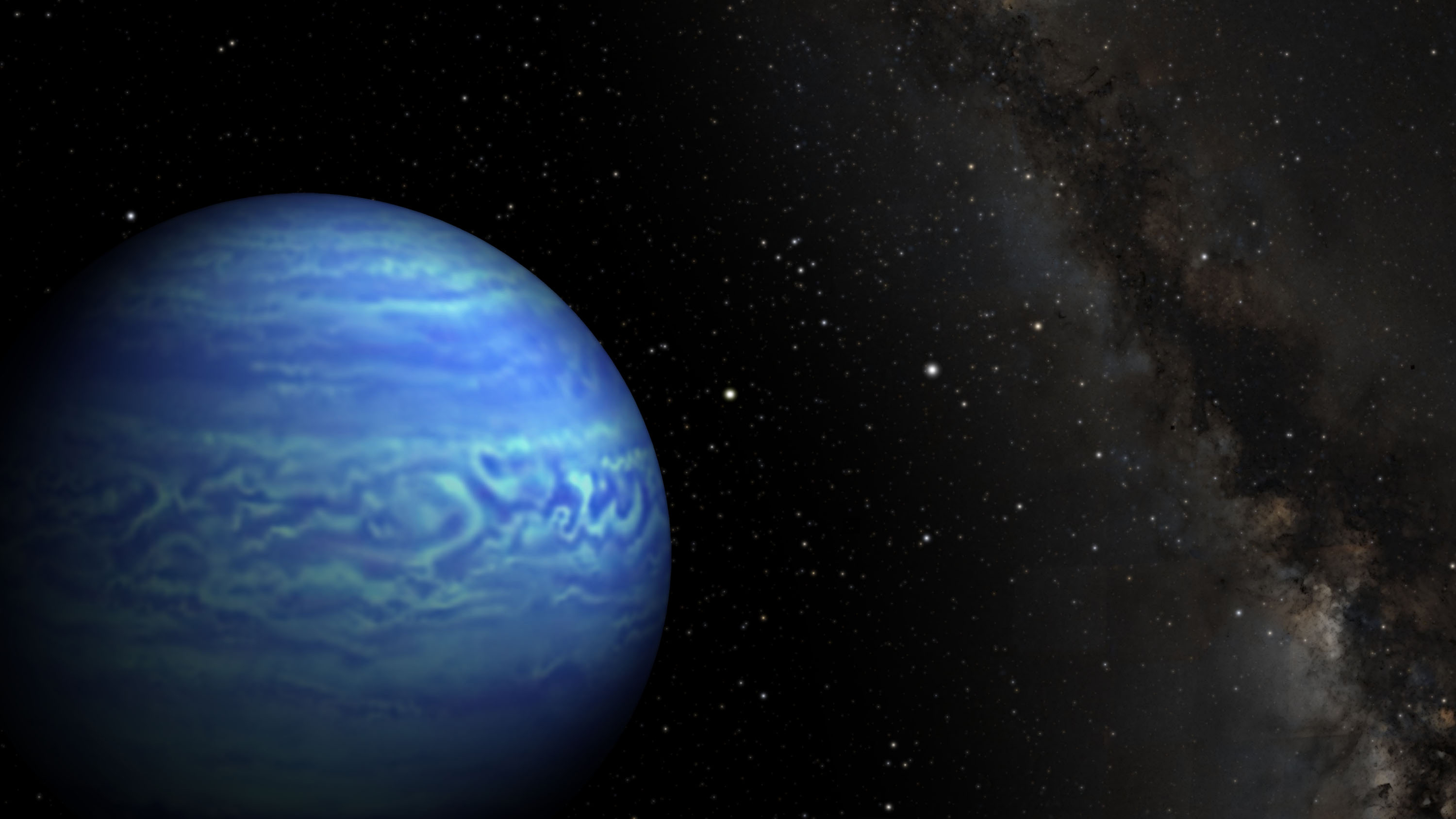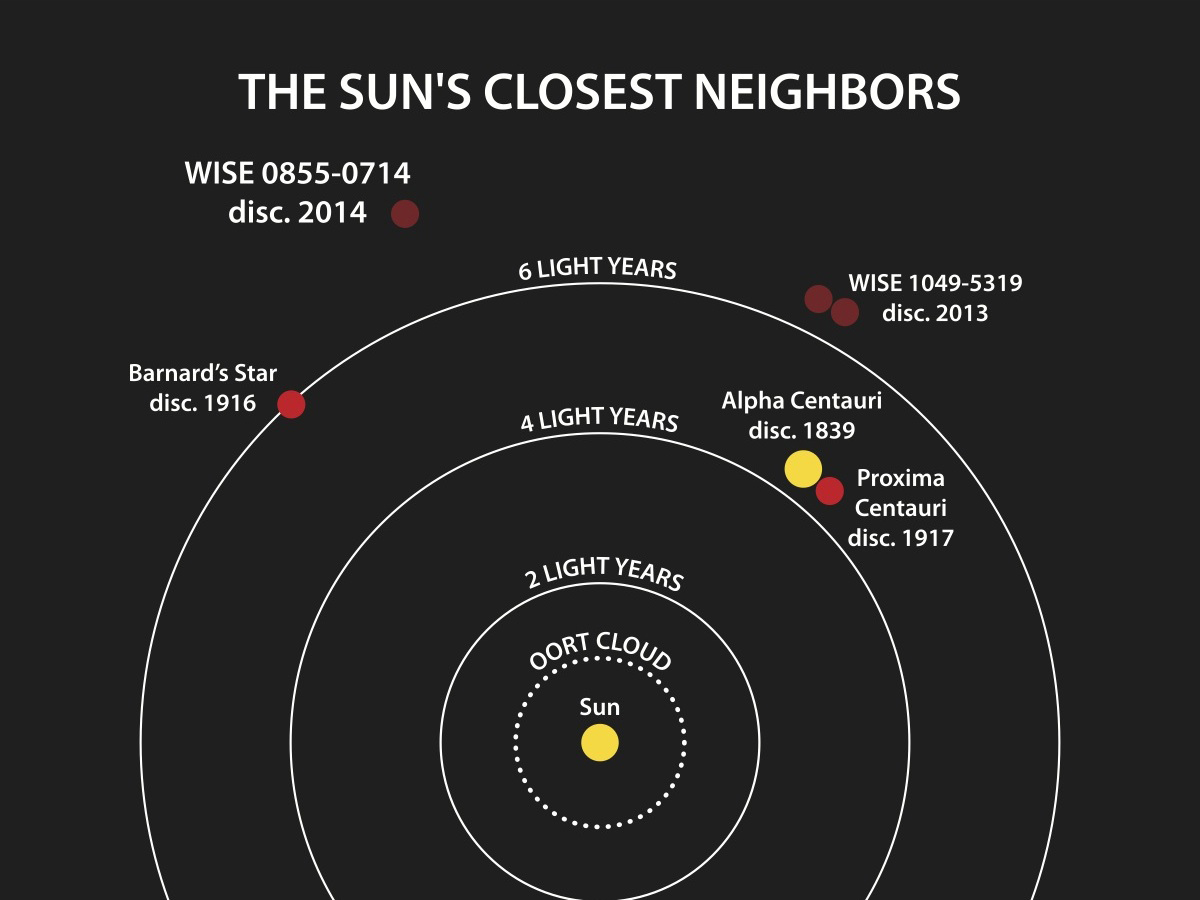NASA Discovers Coldest Brown Dwarf Neighbor of the Sun

A brown dwarf as cold as the North Pole has been discovered lurking remarkably close to our solar system, and it appears to be the coldest of its kind yet found, scientists say.
Using NASA's Wide-field Infrared Survey Explorer (WISE) and Spitzer Space Telescope, astronomers discovered the dim, "failed star" lurking just 7.2 light-years away, making it the fourth closest system to our sun.
"It's very exciting to discover a new neighbor of our solar system that is so close," Kevin Luhman, an astronomer at Pennsylvania State University's Center for Exoplanets and Habitable Worlds, said in a statement. "And given its extreme temperature, it should tell us a lot about the atmospheres of planets, which often have similarly cold temperatures." [Brown Dwarf Photos: Failed Stars and Stellar Misfits]


Brown dwarfs are sometimes called failed stars because they have many of the elements of that make up stars, but they lack the huge mass needed to kick off nuclear fusion in their core. As a result, these objects don't radiate starlight and they sometimes resemble planets. Some are even cool enough to have atmospheres much like gas giants.
While brown dwarfs are hidden in images taken in the visible spectrum, infrared telescopes like WISE can pick up the meager glow of brown dwarfs.
Luhman and colleagues first spotted the object in WISE data. It appeared to be moving quite fast, hinting that it was close by. The team then investigated the object using Spitzer and the Gemini South telescope on Cerro Pachon in Chile to measure its distance and temperature.
"It is remarkable that even after many decades of studying the sky, we still do not have a complete inventory of the sun's nearest neighbors," Michael Werner, the project scientist for Spitzer at NASA's Jet Propulsion Laboratory in Pasadena, Calif., said in a statement.
Get the Space.com Newsletter
Breaking space news, the latest updates on rocket launches, skywatching events and more!
Dubbed WISE J085510.83-071442.5, our newfound neighbor is now the record-holder for the coldest brown dwarf, with a temperature between minus 54 and 9 degrees Fahrenheit (minus 48 to minus 13 degrees Celsius), Luhman and colleagues say. The previous record holders were more tepid, chilling only to room temperature.

The findings were described April 21 in The Astrophysical Journal.
Last year, Luhman used WISE data to reveal a pair of warmer brown dwarfs with a possible exoplanet 6.5 light years away. At such a close distance, that system, dubbed WISE J104915.57-531906, is the third nearest to the sun. The two closer systems are Barnard's star, a red dwarf 6 light-years away that was first seen in 1916, and Alpha Centauri, whose two main stars form a binary pair about 4.4 light-years away.
Follow Megan Gannon on Twitter and Google+. Follow us @SPACEdotcom, Facebook or Google+. Originally published on Space.com.
Join our Space Forums to keep talking space on the latest missions, night sky and more! And if you have a news tip, correction or comment, let us know at: community@space.com.

Megan has been writing for Live Science and Space.com since 2012. Her interests range from archaeology to space exploration, and she has a bachelor's degree in English and art history from New York University. Megan spent two years as a reporter on the national desk at NewsCore. She has watched dinosaur auctions, witnessed rocket launches, licked ancient pottery sherds in Cyprus and flown in zero gravity on a Zero Gravity Corp. to follow students sparking weightless fires for science. Follow her on Twitter for her latest project.
